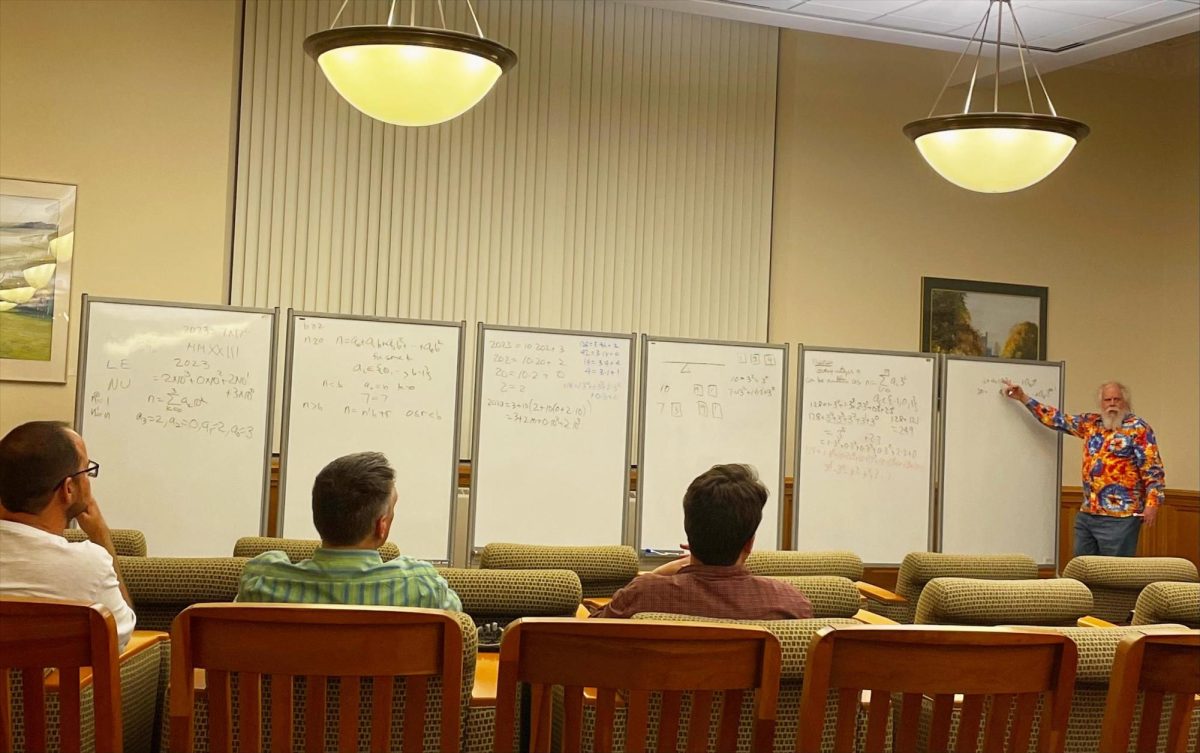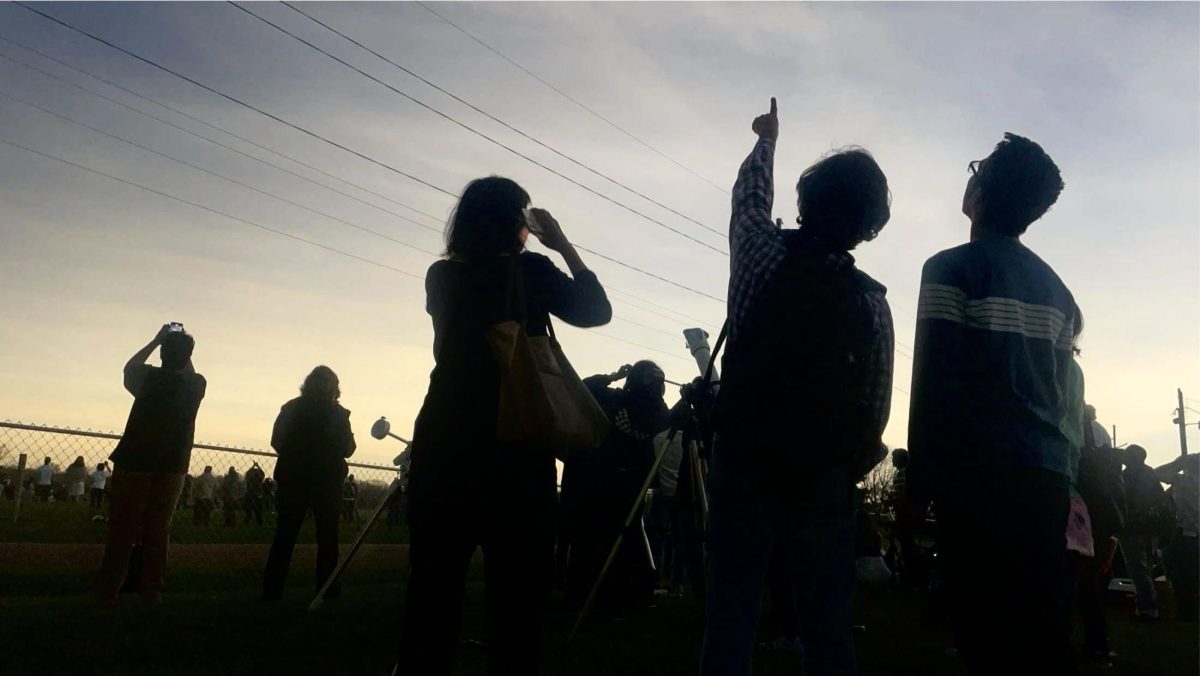Members of the math department and students studying mathematics gathered to listen to a guest speaker discuss the idea behind numbers as a whole. The guest speaker, Bruce Reznick, mostly focused on the number of the year 2023.
Reznick has studied math all his life. He earned his Bachelor of Arts degree in Mathematics from Caltech University and then received an Masters degree from Stanford in Mathematics.
He later started teaching as a Math Professor at the University of Illinois. He taught in Urbana-Champaign from 1979 until his retirement in the summer of 2022.
The content being presented is within the Perry Lecture Series and was made possible by the support of William Perry, a former President at Eastern and a professor in mathematics and computer science.
The lecture was held in the West Reading Room at Booth Library on Thursday, starting at 6 p.m. and ending around 7 p.m. 18 people showed up for the event, and the lecture was even live-streamed on YouTube. The video is now on YouTube titled “Perry Lecture Series: Bruce Reznik: What Does ‘2023’ Really Mean?”
Reznick started the lecture by asking his audience, “How many people here have counted to 2023.” He then went on to be the only person to raise his hand in the room. He explained that even if it is a big number, it is not an impossibly big number.
“2023 seconds is 34 minutes. 2023 minutes ago, it was about 9 a.m. yesterday,” Reznick said. “2023 hours ago, it was August 3. 2023 weeks ago was the week of the Reagan vs. Mondale election. 2023 months ago, was a couple of years before the Lincoln-Douglas debate. So, it can be considered a big number.”
He wanted the audience to understand the idea of the number’s quantity.
Reznick then gave written demonstrations of math equations on the six different whiteboards in the front of the room. He wanted to explain the ways to write the number 2023.
He said, “Every integer can be written uniquely and binary, and I would claim this is the most valuable mathematical theorem that has ever existed.”
One demonstrated way to write 2023 was 2 x 10^3 + 0 x 10^2 + 2 x 10^1 + 3 x 10^0. This doubles as the lecture’s title, “What does ‘2023’ Really mean?” He also explained more about what he was presenting and how you can write integers by looking at bases 2, 3, and 10.
After presenting, he asked the audience if they had any questions about his lecture. One person asked, “Where else is this sequence used?” Reznick provided the audience with another understanding of the theory, which allowed closure to his lecture.
Reznick said how he was very happy to have the opportunity to talk to students who are interested in mathematics.
His goal for the lecture was to “give a talk that would interest mathematics to a wider public standard for a lecture.”
Reznick tried to make the prerequisites so that anybody enduring the lecture would be able to understand.
When asked how numbers can affect people, he left with, “Arithmetic is to Mathematics as Spelling is to Literature; it’s a core activity that people do without thinking about it.”
Jacob Adcock can be reached at 581-2812 or at jadcock@eiu.edu.

















![[Thumbnail Edition] Senior Foward Macy McGlone, getsw the ball and gets the point during the first half of the game aginst Western Illinois University,, Eastern Illinois University Lost to Western Illinois University Thursday March 6 20205, 78-75 EIU lost making it the end of their season](https://www.dailyeasternnews.com/wp-content/uploads/2025/03/WBB_OVC_03_O-1-e1743361637111-1200x614.jpg)



















































![[Thumbnail] Eastern's Old Main was quiet Thursday morning while educators who had left the office to strike picketed outside.](https://www.dailyeasternnews.com/wp-content/uploads/2025/04/Strike_01_LT_O-800x1200.jpg)










